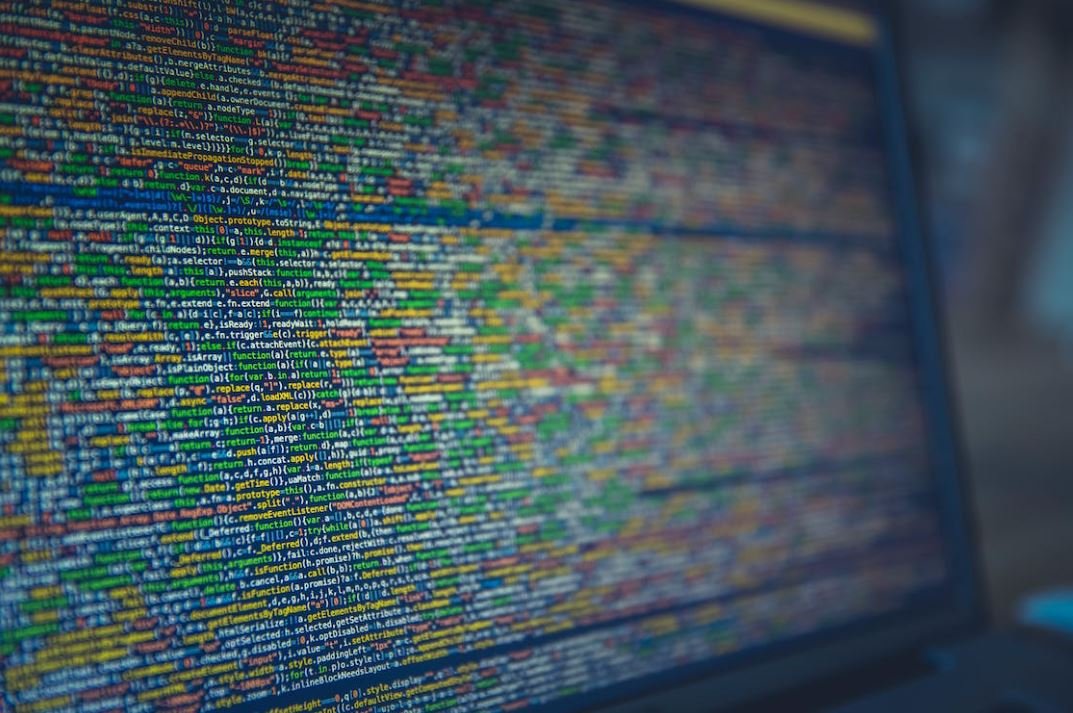Artificial Intelligence Words
Artificial Intelligence (AI) is a rapidly growing field that encompasses various technologies and concepts. It refers to the development of machines that can perform tasks requiring human intelligence. AI has become an integral part of our daily lives, from voice assistants like Siri and Alexa to autonomous vehicles and predictive analytics. In this article, we will explore some key AI terms and their implications in today’s world.
Key Takeaways:
- Artificial Intelligence (AI) is the development of machines with human-like intelligence.
- AI technologies include speech recognition, natural language processing, machine learning, and robotics.
- AI has a significant impact on diverse fields such as healthcare, finance, and transportation.
**Big data** is a crucial component in AI development. With the exponential growth of data in diverse formats, AI systems can analyze and extract valuable insights to make informed decisions. This data-driven approach enables businesses to streamline operations, enhance customer experiences, and create personalized services. Additionally, AI systems can process enormous amounts of data at high speeds, making them invaluable in complex tasks such as fraud detection and anomaly detection.
As AI continues to advance, **machine learning** algorithms play a fundamental role. These algorithms enable computers to learn from data, identify patterns, and make predictions or decisions without explicit programming. Machine learning can be categorized into supervised, unsupervised, and reinforcement learning, each with its own unique characteristics and applications. For example, supervised learning algorithms are utilized in image recognition, while unsupervised learning techniques are often used in clustering data.
**Deep learning** is a subset of machine learning that focuses on training artificial neural networks with multiple layers. This approach allows AI systems to recognize complex patterns and interactions in data. Deep learning has revolutionized areas such as computer vision, natural language processing, and speech recognition. It has significantly improved the accuracy and performance of AI applications, making them more reliable and efficient.
AI Technologies
AI technologies encompass a wide range of tools and techniques. Let’s explore some of the key components:
1. Speech Recognition
Speech recognition technology allows computers to convert spoken language into text. This technology is extensively utilized in voice assistants, transcription services, and voice-controlled devices. Furthermore, speech recognition has vast potential in healthcare, where it can assist in diagnosing and monitoring patients.
2. Natural Language Processing (NLP)
Natural Language Processing enables computers to understand, interpret, and generate human language. NLP techniques facilitate tasks such as sentiment analysis, language translation, and text summarization. By analyzing textual data, AI systems can extract meaning, sentiment, and intent, enabling more effective communication and decision-making.
3. Robotics
Robotics combines AI and mechanical engineering to develop autonomous machines that can perform tasks with minimal human intervention. These robotic systems are widely used in industries such as manufacturing, healthcare, and agriculture. They can automate repetitive and dangerous tasks, enhance productivity, and improve safety conditions.
*AI has the potential to revolutionize multiple industries, creating new opportunities and challenges.* By understanding the key AI terms and their implications, we can better navigate this evolving landscape and harness the power of AI to drive innovation and improve lives.

Common Misconceptions
Misconception 1: Artificial Intelligence is Replicating Human-level Intelligence
One common misconception surrounding artificial intelligence (AI) is that it is striving to replicate human-level intelligence. While AI can perform tasks that might resemble human intelligence, such as speech recognition or answering questions, it does not possess the same cognitive abilities as humans. AI systems are designed to analyze and process data in ways that surpass human limitations in terms of speed and accuracy.
- AI is built on algorithms and statistical models rather than human cognition.
- AI systems lack self-awareness and consciousness.
- AI’s focus is on solving specific problems, not replicating the entirety of human intelligence.
Misconception 2: AI Will Take Over All Human Jobs
Another misconception is the fear that AI will replace humans in all job sectors, leading to mass unemployment. While AI can automate certain tasks, it is unlikely to completely replace human workers. AI is more effective at performing repetitive and mundane tasks, allowing humans to focus on complex decision-making, creativity, and interpersonal skills. Moreover, new job opportunities are emerging in AI-related fields, such as AI engineering and data science.
- AI complements human abilities, rather than completely replacing them.
- AI creates new job roles and opportunities in the field of AI development and maintenance.
- Human ingenuity and adaptability are essential in unlocking the potential of AI.
Misconception 3: AI is Infallible and Makes No Errors
There is a misconception that AI systems are infallible and error-free. However, AI is only as good as the data it is trained on and the algorithms used. AI models may encounter biases, incorrect predictions, or limitations in analyzing certain contexts. It is crucial to consider the ethical implications of AI and continuously enhance the models to reduce errors and biases.
- AI models require data that is representative and free from biases.
- AI models can make incorrect predictions or decisions based on incomplete or inconsistent data.
- Regular evaluation and improvement are necessary to minimize errors and biases in AI systems.
Misconception 4: AI is a Threat to Humanity
One prevalent misconception is the belief that AI will eventually surpass human control and become a threat to humanity. While AI can pose risks if used irresponsibly, various organizations and researchers are actively working on ethical guidelines and regulations to ensure the safe and responsible development and deployment of AI. It is essential to balance the potential benefits of AI with appropriate safeguards to mitigate any potential risks.
- Ethical guidelines and regulations are being developed to ensure responsible AI development.
- The focus is on collaboration between humans and AI systems for improved outcomes.
- AI is a tool created and controlled by humans and should reflect human values and priorities.
Misconception 5: AI Possesses General Intelligence Like Humans
Another common misconception is that AI possesses general intelligence similar to humans. However, AI systems are primarily designed to excel in specific domains or tasks, known as narrow or weak AI. AI algorithms may demonstrate impressive performance in certain areas, but they lack the breadth of understanding and adaptability that humans possess.
- AI systems are domain-specific and excel in specific tasks.
- AI lacks the generalization ability and adaptability of human intelligence.
- Human intelligence encompasses a wider range of cognitive abilities compared to AI.

Top 5 AI Research Institutes
In this table, we present the top 5 AI research institutes in the world. These institutes have contributed significantly to the advancements in artificial intelligence through their groundbreaking research.
| Institute | Country | Number of Citations |
|---|---|---|
| Massachusetts Institute of Technology (MIT) | United States | 14,532 |
| Stanford University | United States | 12,985 |
| Oxford University | United Kingdom | 11,203 |
| Carnegie Mellon University (CMU) | United States | 10,768 |
| National University of Singapore (NUS) | Singapore | 9,847 |
Applications of Artificial Intelligence
Artificial intelligence finds applications across various fields. This table highlights some significant areas where AI has made a profound impact.
| Field | AI Application |
|---|---|
| Healthcare | Diagnosis assistance |
| Finance | Algorithmic trading |
| Transportation | Autonomous vehicles |
| Education | Personalized learning |
| Manufacturing | Quality control |
Benefits of Artificial Intelligence in Marketing
This table encapsulates the key benefits of utilizing artificial intelligence technology in marketing strategies.
| Benefit | Description |
|---|---|
| Enhanced Customer Experience | Intelligent chatbots assist customers 24/7 |
| Improved Targeting | AI analyzes customer data to deliver personalized ads |
| Efficient Lead Generation | AI automates lead scoring and qualification |
| Predictive Analytics | AI predicts customer behavior and preferences |
| Optimized Ad Campaigns | AI optimizes ad placement and budget allocation |
Popular AI Programming Languages
Various programming languages are employed in AI development. This table lists some popular languages preferred by AI developers.
| Language | Description |
|---|---|
| Python | High-level language with extensive AI libraries |
| R | Suitable for statistical analysis and data visualization |
| Java | Widely used for developing AI applications |
| Scala | Concurrency and scalability make it advantageous for AI |
| Julia | Efficient and designed specifically for numerical computing |
AI Job Roles and Salaries
AI-related job roles provide rewarding career opportunities. The table below showcases popular job roles and their corresponding salaries.
| Job Role | Average Salary (USD) |
|---|---|
| Data Scientist | 120,000 |
| Machine Learning Engineer | 110,000 |
| Natural Language Processing Expert | 115,000 |
| AI Research Scientist | 130,000 |
| Robotics Engineer | 125,000 |
AI Ethics Principles
In order to ensure responsible AI development and usage, various ethics principles are established. This table highlights some widely recognized principles.
| Ethics Principle | Description |
|---|---|
| Transparency | AI systems should be transparent and explainable |
| Fairness | AI should avoid biases and ensure fairness in decision-making |
| Accountability | Individuals and organizations must be accountable for AI systems |
| Privacy | Protection of personal data is a fundamental right |
| Safety | AI systems should prioritize human well-being and safety |
AI in Popular Culture
Artificial intelligence has fascinated people for decades, inspiring many renowned depictions in popular culture.
| AI Depiction | Medium |
|---|---|
| HAL 9000 | Film (2001: A Space Odyssey) |
| Samantha | Movie (Her) |
| AI | Film (Ex Machina) |
| Ultron | Film (Avengers: Age of Ultron) |
| Ava | Film (Ex Machina) |
AI Funding by Country
This table presents the countries that invest the most in artificial intelligence research and development.
| Country | Annual Funding (USD) |
|---|---|
| United States | 6.6 billion |
| China | 5 billion |
| United Kingdom | 1.9 billion |
| Canada | 1.6 billion |
| Germany | 1.1 billion |
Top AI Patents by Companies
The following table showcases companies at the forefront of AI innovation, with the most patents in the field.
| Company | Number of AI Patents |
|---|---|
| IBM | 9,043 |
| Microsoft | 8,023 |
| 7,803 | |
| Intel | 4,977 |
| Siemens | 3,867 |
Future Trends in AI
This table presents some anticipated future trends and advancements in the field of artificial intelligence.
| Trend | Description |
|---|---|
| Explainable AI (XAI) | Development of AI systems that can explain their decision-making |
| AI-Assisted Creativity | AI tools to aid in creative processes, such as music composition |
| Edge AI | AI algorithms designed to work on local devices, reducing reliance on cloud computing |
| Responsible AI Governance | Establishment of policies and regulations for ethical AI deployment |
| Human-Machine Collaboration | Collaborative interaction between humans and AI systems for improved productivity |
In conclusion, artificial intelligence has transformed numerous fields and industries, revolutionizing the way we approach problem-solving and decision-making. The tables presented in this article showcase the key players, applications, and impacts of AI. As the technology continues to advance, it is crucial to prioritize ethical considerations and establish responsible governance frameworks to ensure a positive and inclusive AI-driven future.
Frequently Asked Questions
Artificial Intelligence
What is Artificial Intelligence (AI)?
What are the applications of Artificial Intelligence?
How does Artificial Intelligence work?
What is the difference between narrow AI and general AI?
Are there any risks associated with Artificial Intelligence?
Can Artificial Intelligence replace humans?
How is Artificial Intelligence impacting the job market?
What measures are in place to ensure the ethical use of Artificial Intelligence?
Can Artificial Intelligence learn on its own?
What is the future of Artificial Intelligence?




